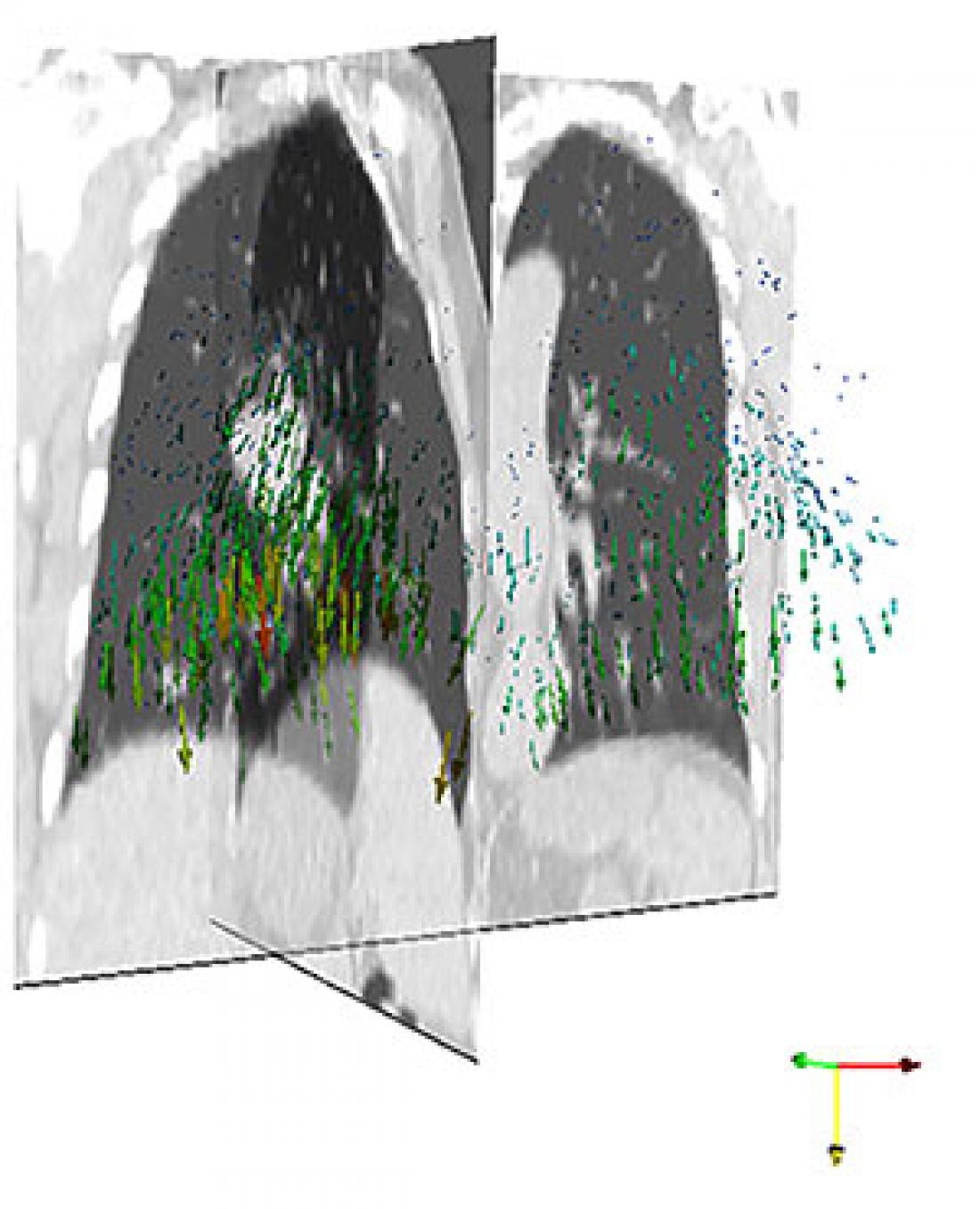Image of lungs obtained by combining three-dimensional computed tomography and four-dimensional magnetic resonance imaging. It reveals both the interior three-dimensional structure of the lungs (including airways and tumors) and their motion (denoted by the colored arrows).
By cleverly combining two medical imaging techniques, scientists at Agency for Science, Technology and Research (A*STAR), Singapore, have found a way to produce high-resolution images of the lungs that is both high resolution and accounts for lung movement due to breathing [1]. The method is expected to greatly assist clinicians when they target tumors in the lungs during radiotherapy.
Cancerous tumors in the lungs are often treated by irradiating them with high-energy X-rays, but this therapy is complicated by the fact that tumors are moving targets, due to the expansion and contraction of the lungs as the patient breathes.
Currently, two biomedical imaging techniques are used to help clinicians locate tumors in the lungs, both of which have their advantages and disadvantages. Three-dimensional computed tomography (3D-CT) provides high-resolution images, but it can only provide snapshots in time and there are safety concerns surrounding exposure to X-rays. In contrast, four-dimensional magnetic resonance imaging (4D-MRI) does not employ ionizing radiation and allows continuous tracking of the lung motion, but its low spatial resolution yields blurred images.
Now, Soo Kng Teo and co-workers at the A*STAR Institute of High Performance Computing in Singapore have combined these two techniques to realize the best of both approaches — a high-resolution imaging method that accurately accounts for lung movement.
The researchers used 3D-CT to obtain a sharp static image of the lungs. They mathematically combined this static image with the four-dimensional (the three spatial dimensions plus time) information extracted from images obtained using 4D-MRI. This enabled them to achieve a high spatial resolution to realize excellent clarity and show movement of a lung tumor over several breathing cycles (see image).
They tested their imaging technique on six lung-cancer patients and obtained impressive results: the average error was less than two millimeters.
As with all medical innovations, adoption of the technique in hospitals depends on obtaining the backing of medical equipment companies and meeting the many regulatory requirements. “The biggest hurdle will be convincing equipment manufacturers to adopt the imaging method,” says Teo.
There is much scope to extend the study. For example, Teo explains, the imaging technique could be applied to other organs or other imaging modalities. “Encouragingly, some clinicians are thinking of applying our method to other organs, such as the liver, which also moves significantly with breathing,” says Teo. “Also our computational method can combine information from different imaging methods to produce more comprehensive data sets”.
The team is exploring both possibilities.
The A*STAR-affiliated researchers contributing to this research are from the Institute of High Performance Computing
Reference
[1] Yang, Y. X., Teo, S.-K., Van Reeth, E., Tan, C. H., Tham, I. W. K. & Poh, C. L. A hybrid approach for fusing 4D-MRI temporal information with 3D-CT for the studying of lung and lung tumor motion. Medical Physics 42, 4484 (2015).



